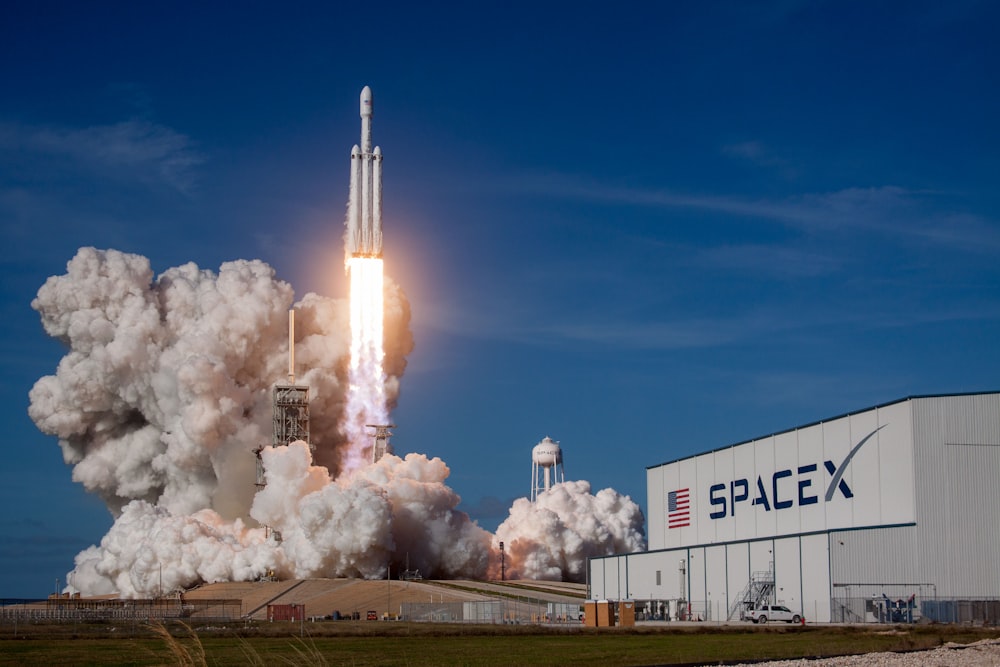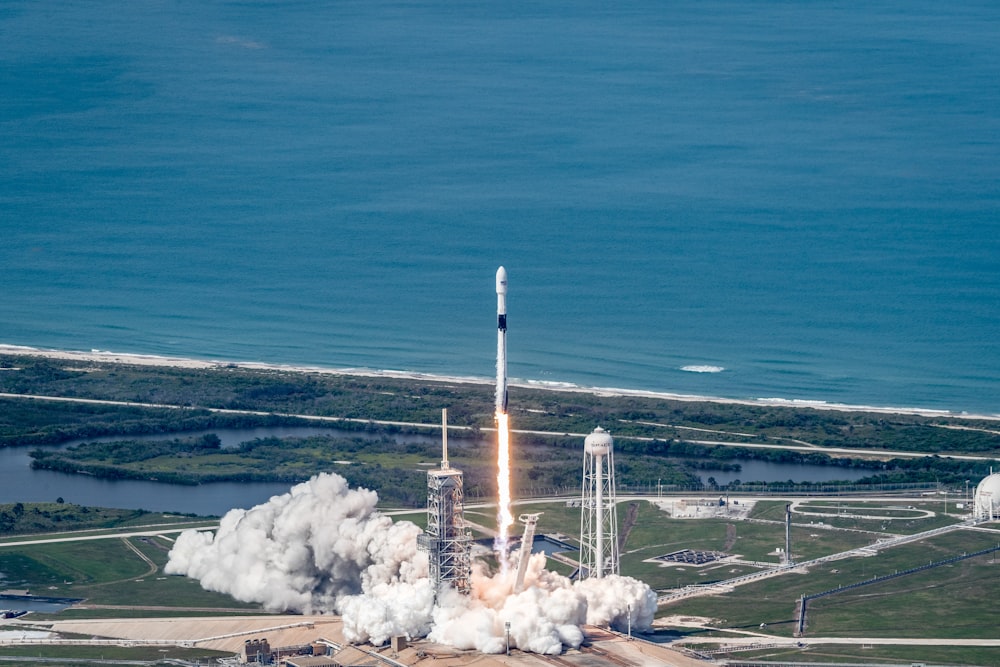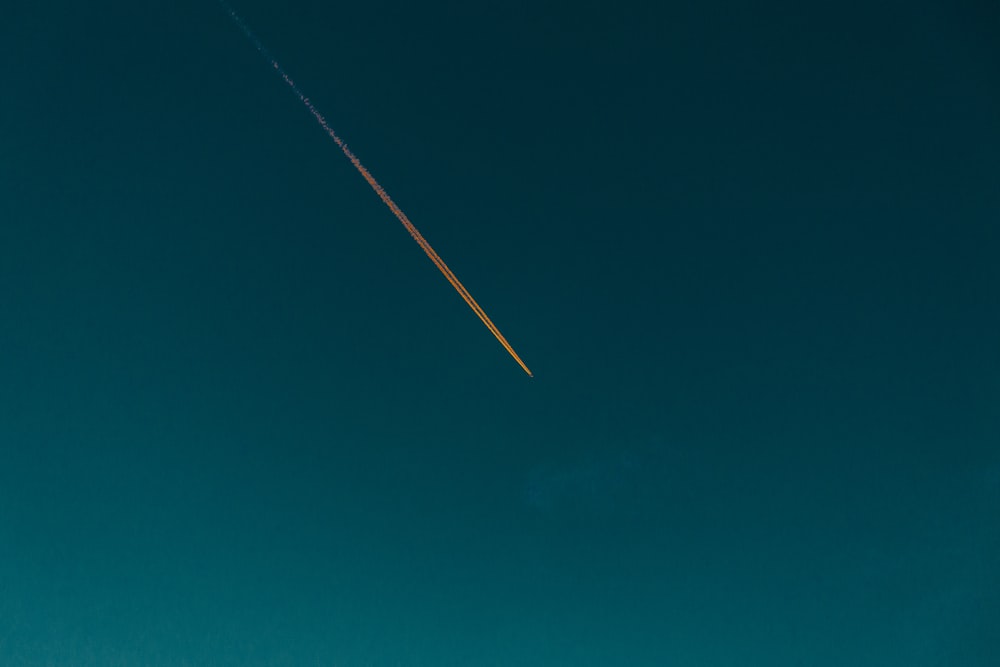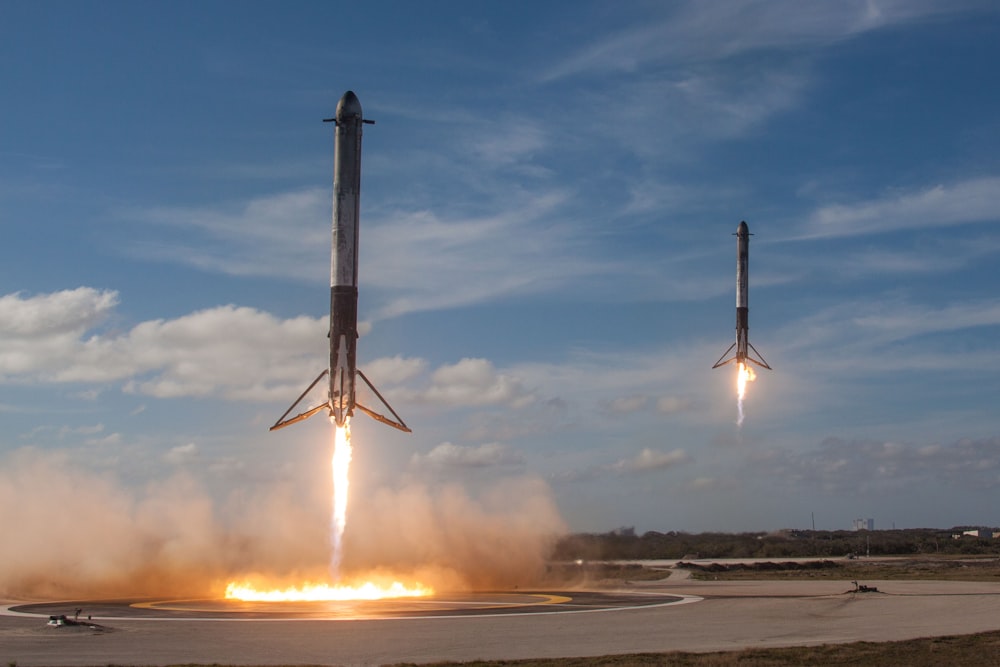
The Origins Of SpaceX:
Elon Musk is passionate about the ability to send people further than we've ever gone before, more particularly making humans and interplanetary species. Now it wasn't until 2001 when Elon actually had enough capital or money to make this happen after he sold his previous company PayPal to eBay he had a couple hundred million dollars to try and create something that would get us excited about Mars. The reason was NASA at the time the budget was actually decreasing or plateauing and there wasn't a lot of interest in the general public about what was going on in space. So he had an idea called Mars Oasis, which would peak the general public's interest similar to how the Apollo mission did so in the 60s and 70s. Now the idea of Mars Oasis is to send a small green house to the surface of Mars, which would inevitably allow them to take a time-lapse of plants growing surrounded by a Martian environment. Not necessarily in the atmosphere of the temperatures but in a restricted field that could show us yes it is capable for life to grow on Mars. Now as they're going through some of the initial stages of developing the entire project they were able to approach some of the challenges and overcome them, but one of the biggest ones that they ran into was actually getting it to Mars. Now the cheapest option for a US-based rocket at the time was 65 million dollars which is way too expensive for musk. Therefore he explored the option of purchasing previously made ICBMs from the Russians. He actually made three journeys to Russia to try and negotiate a low enough price but it never reached his threshold. Now on the way back from one of these meetings with the Russians it turned out he did some basic calculations to see how much from just a material standpoint does it cost to make one of these rockets and it ended up being only 3% of the values that he was getting from either the Russians or the US. Now this idea of creating cost efficient Rockets mostly in-house eventually led to the creation of SpaceX in the year 2002. So at the time SpaceX a musk had the idea of what they wanted to achieve but they actually had to be able to accomplish it they had to make their first rocket or minimum viable product or MVP this being the smallest factor that they could be able to create to show that they're actually efficient in doing so, which would ultimately become something called the Falcon one.Now the Falcon one would ideally be able to take 450 kilograms to low-earth orbit and was named Falcon one after the Millennium Falcon in star wars. Now at the time when the company was formed Elon Musk said that he would try and get the first Falcon one launch to occur in November of 2003 which was only 15 months after the formation of the company which is pretty quick to develop your very first rocket.
Now the headquarters of SpaceX was based in Los Angeles. However the entire team knew that if they're going to be developing Rockets they would also have to be developing the engines that power those Rockets, but you can't do rocket testing in the middle of a highly populated area therefore they had to look out into different locations to see where they could have a test facility. But they purchased some land in McGregor Texas which has been used all the way back to World War two for explosion testings different companies in the aerospace industry actually tested their engines and the most recent one being Beale aerospace was failing at the time and they basically replaced what they had done there with their current methods of testing. Now this facility at its peak time had five to six thousand employees at its location, however when SpaceX first started what they were working on it would only have three employees three people trying to develop a new rocket engine. Now the focus at McGregor was to develop the Merlin and Kestrel engines. The Merlin engine would be used on the first stage or what would lift it off of the launch pad going up into space and the Kestrel engine would take it from its sub orbital trajectory into its final orbit. But soon after SpaceX purchased the land at McGregor they ended up getting their very first customer being the naval research lab and they wanted to send up a small satellite called tax at one. Now this satellite would conduct a few experiments onboard to see whether or not military commanders could get daily updates of images from space to see how exactly the battlefield is changing over time. So the Naval Research Lab wanted to launch in January 2004. SpaceX eventually had to move and end up going to the Ronald Reagan ballistic test site which was on Mallik island in the middle of the Pacific Ocean. Now this island had been used in the past for testing different missiles and rocket ideas however it wasn't last used since 1996 and the size of the island is only around six football fields therefore doesn't make up that much space. And in the middle of Pacific it's near the equator which is great for launching however the climate is very hot and humid which could be pretty harmful to the rocket you're trying to launch. But the timeline that Elon Musk had came up with was actually not realistic he wanted it all to be done by the end of 2003, however it wasn't able to get done by the launch time in 2004 or even throughout all of 2004. It actually ended up that the tax at 2 or the mission that was supposed to go after tax at 1 and ended up being launched on a completely different rocket with a completely different company before the Falcon 1 even got its first test flight. Therefore ended up being somewhat of a failure for their first customer but SpaceX did get another customer being the United States Air Force Academy. They have a project called Falcon sat where they actually put students at the Academy together to try and create a satellite that could test different aspects in space in particular base x was going to be responsible for launching the Falcon sat-2 project. Now it's thought that the Department of Defense spent around 7 million dollars for this launch but it's not for certain therefore SpaceX was still rather in the hole looking at almost a hundred million dollars in expenses but no successful launches thus far. However in November of 2005 the very first Falcon one was on Malak Island getting ready to launch. Now it ended up being around 23.1 meters tall and around 1.7 meters in diameter making it a rather small rocket but pretty impressive for something that they could put together in three years. Now to no surprise being in the middle of the Pacific Ocean there was a weather delay and this ultimately ended up pushing the launch back an entire month because when they tried to refill the mission after the rain had gone away they weren't able to top off the fuel it ended up for some reason not working. So they had to take the Falcon one down and refix it off the stand. But then when they put it back up a month later they ended up doing the exact same thing experiencing a weather delay and when they tried to take the liquid fuel out of the rocket during the weather delay they forgot to open up a valve or a valve didn't open and therefore caused a vacuum to form in the actual chamber that the fuel was being held within, therefore it actually caused a lot of structural damage and they had to recreate the first stage of the Falcon 1 again pushing the first launch back. So now we're looking at March 24th of 2006, So the Falcon 1 took off from the island and had a notable rolling motion early within its flight. Soon after a rocking motion was noticed until around 30 seconds into the flight when the craft pitched over. Now something with rockets is pitching isn't that great of a thing especially when you're close to the surface because that means instead of going up you're now going horizontal to the land, which could eventually be more like a missile. Now the Falcon one ended up coming back down crashing into the ocean only about a hundred meters away from. The launch pad that it just left from and the Falcons at two actually landed rather close to the cargo container that it was shipped there which is kind of ironic however it was damaged beyond repair and was nevela a failure of a mission. Now one of the initial observations for why this happened was that, a bolt had come loose in the engine and then fuel was released into the first stage this would allow fire to expand throughout the stage and inevitably cause it to fail. However further investigations showed that the bolt actually was completely tight however a corrosion due to the humidity in the surrounding area and the weather caused the Falcon one to fail. So as we could see in March of 2006 just around four years after the formation of the company we go from this great idea of trying to inspire people to go to Mars to a falcon one and a rather small rocket falling and failing into the ocean.
1st successful satellite Launch And Falcon 9 series:
A few weeks after failed attempt there would be a saving grace something that not only helped the company grow but also the entire commercial spaceflight industry and this was that NASA would help fund the development of reliable and cost-effective methods to get the low-earth orbit. More specifically funding private spaceflight companies to create launch vehicles like SpaceX was doing. Now why would NASA want to do this? let's put our mindset in 2006 they still had the space shuttle operating and it wasn't scheduled to retire until 2010, but they were trying to figure out a way to use cost effective or lower-cost methods of getting to low-earth orbit and one way is they could create their own launch vehicle but we've seen in the past that that is incredibly expensive another way is using government-funded companies big aerospace companies to get their products to the International Space Station. Again a pretty expensive endeavor. So they wanted to try and kick start the commercial spaceflight industry they wanted to put some money in to see whether or not launch vehicles could actually be competitive and make it much cheaper to get to orbit. So when they made this announcement both SpaceX and a company called Rocketplane Kistler were given part of this five hundred million dollars to try and develop the launch vehicle. More specifically SpaceX received 278 million dollars to focus on the development of the earth Falcon 9 and Dragon capsule. Now the launch would occur in March 20th of 2007 so about a year later from the previous one. In this Launch some of the first notable differences is the control they have over the vehicle. There are very little oscillations early on in the flight and the controller looks pretty great up until stage separation the mission is looking perfect. Now once the stage separates nozzle of the second stage hit the side of the vehicle also called the inner stage. The minor impact ended up redirecting the control system on the gimbal causing a small helium leak. And this helium is what is used to control the gimbal engine therefore once it ran out the engine would start oscillating. Now in the final report it said that major oscillations began around four and a half minutes into the flight but the only available footage only goes to that point. So at the end nozzle beginning to oscillate just slightly now they eventually had to shut down the engine due to this oscillations which means the Falcon 1 did not reach orbit. However musk and SpaceX saw this launch as somewhat of a success this is because they received a lot of information regarding the flight of Falcon 1 how to control it as well as what ways they can improve upon it for the next launch. Therefore they knew that they had to get the stage separation to work perfectly in order to possibly achieve orbit on the very next launch. Now once the word got out that SpaceX was really close to achieving orbit they got a few more customers and specifically they got for the first one being NASA. They would have two satellites one being nano- satellite which weighed around four kilograms and had an area of about 10 square meters when it would be fully extended in space. The other one being preset being a small satellite that was trying to detect how yeast cells can grow within Earth's orbit. This was also really small about the size of the loaf of bread. Now that's not the only customer the Department of Defense also wanted to send up a Trailblazer satellite which would be focusing on improving aspects of the missile defense agency. We're not a hundred percent sure what it was supposed to do but it was supposed to take some measurements for the DoD. And the last customer was a company by the name of Celeste as' and this company actually can send your ashes to space after you pass away and on this mission they were going to send up the ashes of Gordon Cooper who was the youngest Gemini ash not as well as the Star Trek actor James Doohan who played the chief engineer on the USS Enterprise also known as Montgomery.
Now this was their biggest launch at the time not only because it had four satellites on board but also because they updated the Merlin engine from a Merlin a to Merlin 1c. Now the reason for this was that they are also doing development on the Falcon 9 at the same time and the Merlin a wasn't strong enough to get AB launch vehicle of the size of a Falcon 9 up to space. Therefore they wanted to update it to a falcon 1 C and since SpaceX and Elon were fairly confident in the first stage from the last launch they thought that by replacing it it wouldn't make that much of a difference in the overall mission. So on August 3rd of 2008 a little over two and a half years after their first launch the Falcon 1 was again on the launch pad ready to go having an updated control system new engines and four satellites on board SpaceX was really hoping for this to be their first successful mission. So again what happened the launch did very well, it as we forward to the separation stage the engine cuts off the separation occurs but then the first stage has a second push. When the first stage cuts off there is a time delay due to residual thrust created by the engine. However SpaceX underestimated the strength of the new engine and thus it collided against the second stage. The collision isn’t what caused the failure but the second stage Kestrel engine actually ignited with the first stage right there. Which led to the system going out of control which we can see for a brief second. Now this failure was a pretty big deal for SpaceX, even though the engine worked perfectly the four satellites onboard were destroyed and they were running out of money pretty fast. But Elon Musk was still firmly passionate about what he believed in. Just a few days after the failure he went out to the news and said “there should be absolutely zero question that SpaceX will prevail in reaching orbit and demonstrating reliable space transport for my part I will never give up and I mean never”. At the time Elon Musk showed nothing but confidence however in recent years he's actually said that was one of the hardest years of his life both SpaceX and Tesla were facing. And musk personally took the blame for this third launch failure and he also said that they would only have one more attempt enough money to try it one more time or else SpaceX would go bankrupt. Now to put this into perspective the other company that got funding by NASA called Rocketplane Kistler they actually went bankrupt a few months before this launch because of financial reasons. They didn't have enough money to make it happen. So almost everything was against SpaceX at this time they really only had one more attempt at making it work. So you might think that the development of the Falcon one everything would be retested and try and figure out everything they can fix before this launch but in reality from the previous launch they only had one that needed to change which was the time delay between the separation and when the second stage would ignite. Therefore the next launch was only six weeks later determining whether or not the company SpaceX would actually prevail or if they would fail. The Launch was smooth with stable control systems during the initial ascent as we approach separation the main engine cuts off the new time delay weights and separation is about to happen. Now this point is the defining moment for the entire company. Separation occurs and the nozzle just barely makes it out without hitting the interstage. Now the mission continued on to achieve orbit now as you can imagine this was a pretty exciting moment for not just SpaceX but the entire industry as a whole SpaceX this was their first time achieving orbit successfully however it was also the first time a liquid powered rocket was successfully created to achieve orbit that was privately funded. now after this mission was a success the Falcon 1 would go on to fly one more mission before they put it to the side and focused directly on the development of the Falcon 9 and the Dragon capsule. From here onwards Falcon Series begin and take the SapceX to new heights. After this they did many missions successfully and the rest is history.
In the recent times SpaceX created the history once again by becoming the first privately funded company to send the human flight to Low Earth orbit into the International Space Station. This was a huge success in their journey and in the upcoming time there are many projects related to sending the man to the space by SpaceX.
And also this is the first ever company that uses Reusable Launch System discovered by SpaceX. Following is the image of Landing of Reusable Launch System:
So this is all about the History and Evolution of SpaceX, this company touching new heights every day. I hope you all learn something new in this Topic and don't forget to share this.
Thank You











0 Comments
Please Do not enter any spam link in the comment box.